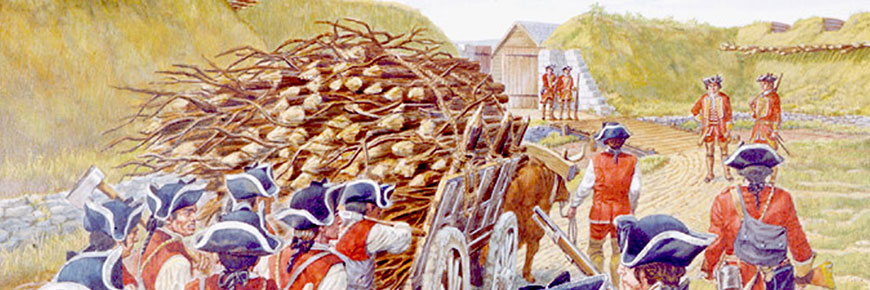
The start of the British occupation
Fort Beauséjour – Fort Cumberland National Historic Site
After the fort was taken over by the British, with the new name of Fort Cumberland, new barracks were constructed both inside and outside the walls. Although these new facilities could house up to 800 soldiers, they were rarely occupied by more than a detachment of about 200.
The soldiers took advantage of every opportunity to amuse themselves. In 1756, for example, British soldiers brought in the New Year by roasting a variety of meats outdoors. St. Patrick's, St. George's and St. David's were always accompanied with festivities, as were the birthdays of the Royal Family.
Engineering concerns
In the early 1760s, a British engineer recommended, without success, that the fortifications be strengthened since they would never withstand a sustained artillery attack. French engineers had made similar observations in the past.
Diminishing purpose
With peace restored in 1763, Fort Cumberland was no longer of strategic importance although it continued to be manned by British troops until 1768. It was occupied temporarily in 1776 during the American War of Independence by about 275 soldiers from the Royal Fencible Americans under the command of Colonel Joseph Goreham.
Next part: Settlers from YorkshireRelated links
- Long before the Fort: Acadian settlement
- First warfare
- Zone of contention, place of growth
- The construction of a fort at Beauséjour
- Life inside the Fort during the French regime
- The Acadians and the fort
- Tensions of the 1750s
- The siege of 1755
- The deportation of the Acadians
- Settlers from Yorkshire
- The 1776 siege of Fort Cumberland
- Changes to the fort after the second siege
- Creation of the national historic site
- Archeological digs
- Date modified :